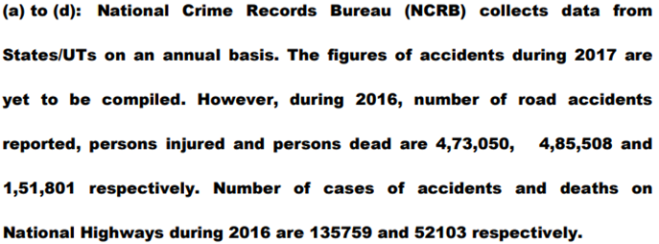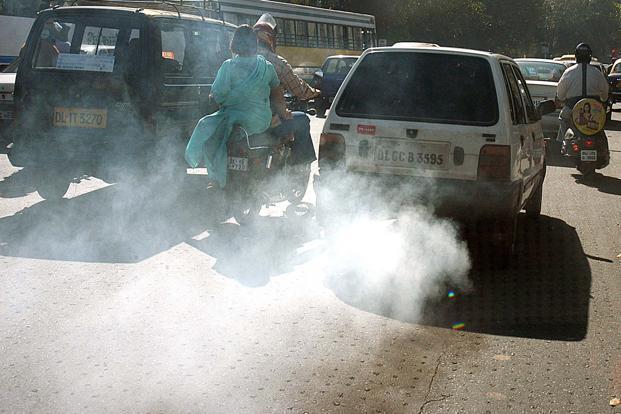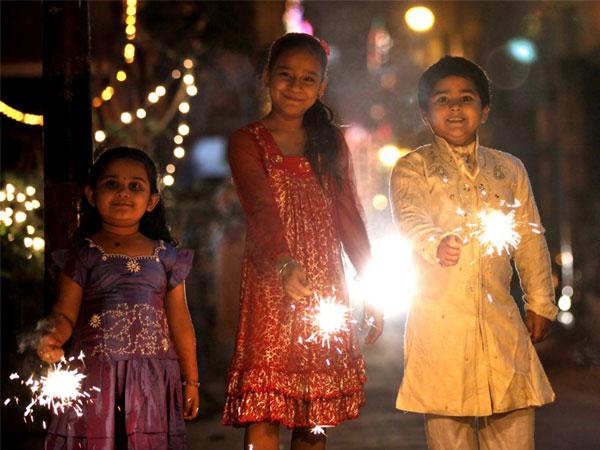In the late 19th century, the journalist and poet Wilfrid Scawen Blunt undertook a journey in Muslim lands. He wrote 5 essays which are not only an account of his travels, but also a deep analysis of the nature of Islam and a discovery of its strengths and the mode of its operation, based not on fanciful theoretical studies and interviews with ideologues but deduced from on ground facts that were carefully collated, verified and analyzed with sound logic. The author was a friend of the rAkshasa Churchill, and no doubt his insights must have percolated down to the Angalika foreign office which, from the evidence of the past century is essentially following his recommendations regarding the marunmattas. Of course we include madhyama-mleccha desha as it took over as the leader of the Anglosphere sometime during the 1930’s. If we are to ever catch up with them and destroy our enemies, it is essential to at least know what they were planning 130 years ago and whether the plan is still in operation, and work out any modifications that might have been made since then considering the changed circumstances if any. Even as a purely theoretical exercise, it is immensely important for H to retrace the steps taken by our enemies on our own and thus build our intellectual, strategic and military muscles. Some H might object: this is not cutting edge, and the ground situation, players might have changed and we might not gain from these activities. Such objections betray a lack of understanding of what knowledge is and how it is created and maintained. Additionally, in geostrategy, such timescales are only medium as opposed to the constant refrain that the world has changed (when in fact changes are restricted largely to the urban classes and that too in the most superficial things which is interpreted by these shallow people as being fundamental). Geostrategy itself emerged as a result of the 2nd and third unmada’s obsession with exterminating the “other”, and is an area which has never occupied heathen intellectuals (one might cite Alexander, Genghis, Cyrus etc. but these were rAjans conquering desha-s, not a politico religious combine hell bent on the annihilation of a well-defined other, hence the hostility isnt permanent, dies down once the conquest succeeds or fails). Therefore there is no shame in admitting that we lag behind, and we should not play the game before at least taking a strategy 101 course. In this piece the aim shall be to summarize the main points in Blunt’s essays, and we shall not be wrong in asserting that he may be a watered down Ibn-Khaldun for the Anglo-Saxons, who set the agenda and offers a sound theory for the expansion of their influence.
These write ups are meant to indicate to H the capabilities and qualities of even an Anglo Saxon journalist and poet, which in Bharata today is synonymous with a treasonous sybarite. In addition, if any persons in our supposedly academic institutions, cut off from their roots, and essentially a conduit for the memes and practices of the whites, want to do something for the civilization, they may utilize their skills to approach our enemies from the below perspectives and come up with possible solutions, even if they cannot be immediately admitted as full members of our sabhyata. In case of success, which erases all dishonor and past sins, they shall surely be accepted back. Such also applies to many H collaborators (intentional or unintentional) of various hues who occupy prime positions in academia, government and the sEnA.
For each essay, a summary of the text shall be given followed by our own comments.
Preface:
The work is not fit for critical acceptance, but has been released due to the speed of events that have overtaken the world. Modern Britain, a unique historical experiment where public opinion guides state affairs cannot have a narrow vision confined to itself, especially when it rules a huge agglomeration of races across the world and on whose lands the sun never sets. So, to inform the public of the momentous changes occurring in the Islamic world, the work has been released in spite of its incompleteness and inaccuracy which are mitigated by the general truths asserted and which were confirmed during the visits after these essays were written. The ulema at Cairo, though not explicitly opposing the Turkish Abdul Hamid, have already begun to speak of reform which essentially means a return of the religious authority of the Muslims back to Arabic hands. Their not announcing an Arabian kalifa at this point is a remarkable testament to their political sagacity, which means that they will have a much greater triumph once the Ottomans fall fully. Apologies are due to the Muslims for whom a period political misfortune is predicted, but there is no doubt that Islam will after this period emerge even stronger and glorious.
Comments on the preface:
[1] A summary of why the work is important; surprising admission of Britain being a unique and new country where public opinion matters. It is the very same “public opinion”, which the Anglo Saxons mould in other countries which helps them to maintain their hegemony; they have a rich experience, starting from their own land, where they execute it successfully. In any future strategy for H the possibility of bypassing public opinion must be factored in without hangups about rights, democracy etc (other notions that have been programmed into our foolish elites, by AS)
[2] While during those times public opinion of the middle class males and gentry might have mattered, AS countries are run by other cabals and this may not be true today
[3] Even in 1880’s, when they were supreme, an Englishman could not offend a Muslim and asks pardon from them on account of their numbers and organization. H have to learn to apply such pressure tactics through which their presence itself evokes at least superficial respect and fear among our enemies.
[4] Blunt notes that schisms will weaken the dar el islam and that the marus shall have to be satisfied with a limited dar el islam till better times come, and on no account an anticaliph should not make an appearance anywhere. Here, Blunt is guided by the anti-Pope at Avignon and the western schism that split the Catholic Church and weakened it till the council of Constance (which also delivered a decisive verdict against the hussite movement)
Essay 1:
A revival is taking place in the Muslim world which no Englishman can ignore. It can destroy us if our policy is incorrect, but can be to our advantage if the right steps are taken. The work and responsibility to solve this problem cannot be avoided in the usual manner of politicains, stating it to be theoretical and impractical as it will affect the future of Britain. To get an accurate idea of the problem and gather reliable data, one must go to Jeddah and see for oneself. During the pilgrim season, it is a far more cosmopolitan city than any in Turkey, and all manner of race and people can be seen here right from China thorugh to Morocco. These have given rise to a mixed population; and due to this mighty influx of people from every corner of the globe, one sees that Islam is much more than the sum of its parts. On a more mundane level intelligence from every corner of the globe is to be heard in the bazaars of Jeddah. This concoction induces confidence in the hejazi and he is much more open about the ambitions of Islam than a turk or an Indian Muslim would be. The ulema in Cairo, Constantinople and Baghdad have little idea of the vibrant, alive and moral force that Islam is and are into theological arcana, but which are always looked at from a worldly and practical standpoint; but only in Jeddah can one see the vast hordes of Malays, Indians, Africans in front of whom the Turk pales into insignificance numerically. From the statistics of pilgrims (after cross checking with local authorities), one can form an estimate of the Islamic world, which though sketchy will be of immense help. While the Indians, Malays and Africans number in the tens of millions, and even matter in terms of wealth, it is the Arabs who shall be the driving force of Islam and will matter most in their religion.[1] The statistics of pilgrims are taken from the past few years and corroborated as far as possible by European observers, and all of them hold the following notions:
1) A belief in one true god as the creator and ordainer of all things
2) There is a life after death and we are to be judged there
3) Divine revelations have occurred periodically and they are to be practiced in legislation and politics, not merely believed and this practice is called Islam
4) The koran is the literal word of god and Muslims alone have preserved it through their tradition of fiqh and isnad.
Different Muslim sects however at variance, do not dispute the above; also, they do not eternally damn the others (except Wahabis, who consider other Muslims as polytheists and idolaters, violating the above 4 beliefs) like Christians do and are less irreconcilable than the sects of Christianity.[2] Let us now look into the composition of the Muslims and what they believe.
The Sunnites are the most numerous and are divided into four schools. Apart from the above beliefs, they hold that authorized channels of tradition exist which have equal weightage as the above, such as the opinions of the rightly guided caliphs, the books of the doctors abu hanifeh, malik, shafi and hanbal (the schools of fiqh) and with progressively lesser force the fatwas of succeeding ulema within the tradition till the present day. In addition, the Sunnites see themselves as a political body, a point missed and misunderstood by most.[5] Islam cannot be controlled by normal means as there are too many adherents who are fanatical and are not amenable to anyone except their sheikhs. Among the different schools of Islam, there is a hierarchy and some are more influential and powerful than others. The different schools of Islam more or less are independent, and their sheikh al Islam’s might meet at mecca; but one doesn’t control or influence another. The measure of influence and power is determined not by conventional methods, or even by an open conduct of war but by a strange tribal process unique to the Arabs of the Hejaz and in particular the Quraysh, the tribe of Muhammad:
The ultimate control of the Muslims rests with an entity in the Hejaz that fulfills the following conditions:
1) Directly in the blood line of Muhammad
2) In control of the cities of Mecca and Medina
3) Has the backing of the various factions within the Quraysh, and to whom the other sheikhs of the Quraysh submit, either voluntarily or by the sword
4) No political entity outside of the clans will ever have absolute authority, whether the Turks, Egyptians or Mughals (didn’t even try)
5) Even to the superpower of the day, only nominal recognition as guardians/sultans, only ceding of power temporarily[6]
The schools of Islam are as follows:
Hanefite: Mainly of the upper classes, it is associated with the Osmanlis. There are some in Egypt too but while they are represented in the Al Azhar, their numbers and their contribution to the haj are not much from that part of the world. However, since Indian marus are mostly hanafi and rich, H must focus on them. These people hold that all inquiry and changes to the law are closed, while at the same time allowing for much laxity in behavior. They are not distinguished for their piety and learning.
Malekite: It is a “low” sect in the sense that its followers are commoners; strict and severe, the majority of Egypt and all west of the Nile follow this school and constitute a strong section of opinion among Muslims. They are the most fanatical and devout and a major part of the haj. The western Moroccans and Algerians have a better awareness of the sharia than even the Arabs, and the only point they diverge on is the question of the kalifa, especially that of the Turkish kalif. Their fanaticism and zeal has led them to convert black Africans in large numbers; effete and aloof Christian missioanries are no match for the open and frank Moor who shares food and women with the blacks and thus gains their allegiance.
Shafite: They are numerous in the places where the Arab missionaries went and especially in the Deccan. They are the ones whose reforms may carry through in the modern world, and in addition have a humane approach towards the Jews and Christians which even if I exaggerate, has at least a kernel of truth to it. Opposition to the Turkish califate is most palpable within this school with some openly questioning it.[8]
Here it might be apposite to consider the Indian case. While Muslims have lost power there by no means the religion is in decay and from the haj numbers and the people who do it we can estimate that they are the future of Islam. Indeed, in Mecca there is frequent talk of India being the new Mussalman land and a place where the fortunes will turn for the better. [9]
Shiites: This sect is basically a consequence of the Persian mind, which is equally prone to credulity and suspicion. The strange feature of this sect is that it does not have a formal hierarchy, and there is no sheikh el Islam like in other sects. Each congregation is semi-autonomous and depends on the charisma of the preacher as long as he has a diploma from Ispahan or Karbala, and whose fatwas will carry weight among his congregation. Some of the more educated mullahs preach pantheism while the vulgar give credence to all sorts of superstitions. Heredity is absent, which makes likely multiple claims to authority thus weakening the overall cohesiveness in addition to diverging dogma in each congregation. The birth rate too of this sect is inferior to the others in Islam and it is likely to have only an indirect influence on the Muslim world ever in the future. Shiites adopt the superficial atheisms of Europe very easily, and all extremes of behavior can be found among them.[10]
Abadiyeh, Zeidites and others: These sects hold some quaint opinion or the other, being fanatical on that point but have no sound political principle or ideological strength or numbers to decisively influence the course of Islam. They will be absorbed by the victorious school after a severe example is made of some of their leaders and ulema.
Wahabites: This is a school, which, though small in numbers has a clear program of reform for the Muslim world. It is much more influential than it appears and at one point of time all Muslims of India were about to be converted to this school, such that the closeness of it success escapes even Muslim observers. The freshness and audacity of the reformer is in full evidence in his principle:
- He declared himself a mujtahed, breaking away from the traditional schools
- Only the Koran was the written law; the rightly guided califs’ claims alone were to be admitted
- He established it politically in Medina, just as Muhammad had done
- As a result the Wahabis conquered large areas and their influence spread right across Africa and Asia, with many following it secretly
This success, similar to the initial expansion of Islam was not to last because of some of the Wahabis’ actions. Arabization of the world could not happen again except through arms, and they had not taken into account the changes in the modern world (Comment: AS- Saudi alliance filling up this lacuna) and lacked the sagacity and patience of Muhammad. Insisting upon returning Islam to its initial days, they destroyed the tombs and minarets of the saints and even that of Muhammad, arousing the ire of the entire Muslim world which began to see them as barbarians; the world had not come down to the level of civilization of islam as yet (Comment: more work was needed, which happened in Bharata, Java, Suvranadvipa, Mesopotamia etc in the 20th century greatly facilitated in every way by angalikas and Saudis. Marus are far more cohesive and radicalized in far greater numbers today). In addition the horror stories spread and greatly stemmed the haj alarming the hejazis for whom it was the main source of revenue. They complained to the Turk sultan Mahmud. After gathering the support of the ulema, who asked him to do his duty as the protector of the holy places Mahmud sent Mehmet ali who eradicated the Wahabis and decapitated Ibn Saud as a heretic (Comment: An exact replay of this event occurred, this time with the Saudis in place of the Osmanlis during the siege of the grand mosque in 1970. Contrary to H who interpret the gore within Islam as a weakness, it is a selection mechanism that increases their collective fitness. If Saud/Otaibi had succeeded he would have attempted another early Islamic expansion like post-Muhammad, perhaps aided by AS).
Though the movement failed, it did not die out and has sown its seed far and wide across Asia and Africa. As of now the old establishment was too entrenched, the movement too immature, which made victory difficult if not impossible. However, this sect contains a sound ideology and is uncluttered; it managed to deeply influence a great many people and was undone solely because of inexperience, which will be acquired in the coming decades. Therefore its importance exceeds that of all the other sects of Islam. [11]
Comments on essay 1:
[1] Here Blunt, instead of theorizing, starts to gather tangible data (verified as far as possible by euros) about arrivals, retention and departure, and also observes the interactions among various races of Islam. This is a most critical step neglected by the so called H RW and even our “analysts”, “strategists” etc.
[2] This is a crystal clear summary of the Muslims’ psyche. From the H standpoint, it offers insights as to why the pretas appease the marus, and how maruism is more robust having removed the weaknesses of pretaism (eg politco-legislative-theological role of kalif, split in pretaism & resultant troubles; terrible fights between sects/heresies of Xtianity-marus deal with heresies much more effectively, with less human & ideological losses; the iron clad 4 core rules above which are impregnable, whereas preta beliefs have been torn to shreds; also note the numberless heresies in church history and the protestant denominations)
[3] Here it must be noted that the AS have estimated that Wahabism is doctrinally superior for the control of the maru population which is sitting on taila. While their plan has worked for so many years, we forget the Naqshbandiya and Kubraviya sheikhs waiting patiently, grinding out the decades and waiting for the decline of the west after which they plan to enforce sharia on all, perhaps riding the Wahabi wave. It is this group that H must hunt down across eurasia and exterminate to the last man. Wahabis don’t have enough people and will transfer power to these sophisticates who alone will be able to manage the dar el islam. Bharata marus supply much of the IQ for this work and no time should be lost in exterminating them.
[4] A part of the effort should be to destroy every element associated with isnad by identifying the “chains” of narration and exterminating them. It was this aspect that Hulagu failed to achieve which resulted it in events as we know it, even as he rounded up the ulema and removed them along with decimating the ghazis effectively. Isnad or the supposedly authentic version of maruism still survived in bharata and Bokhara and marunmada was able to bounce back as a result. Nowadays the best and supreme isnadists are held to be in bharata, which means that H are nourishing the seeds of their own doom right within their lands. The importance of complete annihilation of these elements cannot be overstated; upon their destruction, marus can be split up into various factions and made to destroy each other. The existence of an authentic strain makes possible the otherworldly solidarity and coalescence of marus across the world, which has been attempted in vain by Christians, and it must be removed if we are to defeat them. OTOH, the lack of such might potentially split them up into various groups after which the maru populations can be moulded according to our specifications (in particular extract the IQ & health while isolating and removing the aggression).
[5] This implies that a maru, by his very belief and existence can never consent to any political authority apart from the ulema’s sharia. Due to the so called freedom of belief, they are permitted to continue in Bharta even though by definition they are traitors for the mentioned reason. This unity of religious and political belief is quietly avoided by AS media and its Indian stooges who portray the marus as a religion alone and don’t highlight their political nature which is built in. Thus when H wax eloquent on secularism and vacillate on their faith (having admitted the Ithasas as myths etc), the maru confidently spites them and challenges them whereupon they have to back down and slink away. It is also used to bamboozle new recruits that Islam is a “complete system”.
[6] Even though the actual kalif may be challenged and disputed, the idea of a kalif wielding spiritual power and the temporal authority to enforce his will is irresistible for every Muslim, and this brilliant psychological trick has lost none of its effectiveness. It promises an internally consistent utopia, and if it fails can always be explained away as imperfect (as has been said of various Islamic rulers). But the idea itself of an infallible spiritual and political kalif ruling the world wide dar el Islam make marus fight for it every day of their lives in some manner or the other. The setup ensures that any belief can be enforced by the sword.
[7] Blunt, ever the observer, carefully notes the numbers of each school and their guiding beliefs to predict their behavior. He wonders if each has a reformation, what would be the consequence, and whether the reforms of a particular school would be feasible and applicable to most marus and above all whether it could be turned to the advantage of the British. Of course the wahabis are chosen for their possible future influence on marus, closeness to the Brits and ideological robustness (which leads to the first).
[8] It might be noted that the Brits literally broke up the Turkish caliphate and grabbed all the prime pieces of real estate, duping even the French with whom they had conspired
[9] As has been discussed in other places, Bharat marus (like Bharata pretas) are the most fanatical and intelligent of all the minnow eka-rakshasas. In addition they live among the pagans where their hatred gathers fuel on a day to day basis and their relative lack of power rankles them; their anger will morph into overt physical aggression once they sense the balance of power is in their favor (vide Acharya of MT’s Indiafacts article). Thus they are the most dangerous elements who have to be comprehensively neutralized no matter how much some of the brainwashed H squirm.
[10] Here Blunt has already judged the inability of the Shiites to come to power in islam and thence acquire the leadership of marus, in spite of their civilizational capital. This is a crucial aspect; what matters is not the past of an ethnos but the current state of its core and the future possibilities contingent upon the core surviving. Many highlight Iranian achievement in civilization and the intellect to hold them up as an exemplar of a supposedly benign and cosmopolitain Islam. But the religion and the populace had decayed and were no longer robust and vibrant and would not be able to overcome the main schools of Islam in the struggle for dominance. Specious arguments about how Persian Muslims apparently brought tehzeeb to hind must be countered and demolished along with a statement of the coming ruin of the said ethnos. The same reasons wrt the Persians still hold true today and have been brought out on twitter by Rjrasva.
Based on such sound observations, blunt indicates that Shiites shouldn’t be supported by the Brits, or rather should be pushed under Sunni hegemony with their help. This policy continued throughout the 20th century with AS essentially doing all to shore up the wahabis and scuttle Shia Iran.
[11] This paragraph shows why the Angalikas have ruled the world so effectively. We do not know of any other account that so crisply identifies the usable components of islam for an external force. One might point to Aizawa, but his analysis was more general and fearful, focusing strictly on the preservation of the Japanese. While that was indeed the right thing to do, he does not have the catholicity, maturity and confidence of Blunt in accepting and manipulating these great forces which is necessary to become a world power. The sulapurushas, of even greater strength and IQ than the angaliks were unable to capitalize on the various opportunities they too got in the Middle East and thus having lost resources and allies, lost the world wars with much loss and underwent subsequently close AS monitoring and fine grained control. The Rus too despite being right next to the Shia and Middle East blew it with their meat grinder approach, leaving the Angalika-s to enjoy dominance and the resources of this region. Note that inspite of winning, Engalikas have never permitted these places to stabilize; whereas Rus and sulapurushas, while exceedingly brutal would have at least let the populace in peace after a period of time just extracting the resources as in CA republics etc.
Blunt’s focus is never far away from the issues that really matter: the numbers and beliefs of those numbers. Thus he forms an accurate idea of what these numbers are likely to do, and how they might go about doing it and how they might be controlled. His brilliance in deducing the falling fortunes of the Shia and backing the wahabis, inspite of their lesser numbers can be regarded as a stroke of genius, which have proved enormously fruitful for the AS in the 20th century. Here the apportioning of weightage to the numbers, cohesiveness, ideological soundness of each sect of Islam and the subsequent conclusions betray a fine political mind, perhaps approaching the Sunni Ibn Khaldun, in whose time the situation was simpler and less complicated, though he was indeed the pioneer theorist and frameworker. We suspect that having identified the group, the Angalikas made sure that the elements lacking for their success were supplied by them in exchange for influence and control over the Muslim populace. This makes clear all the actions of the AS over the past century when, even while claiming to advance democracy, they actually bombed civilization out of so many places, thus preparing the ground for a wahabi brand of maruism which latches on to a low level of complexity and civilization. Similarly, they also aid TSP and TSB against H so that the entire subcontinent can be controlled through their influence on the triumphant strain of Islam in addition to the parasitic evangelists and pretas already present. Jambudvipa is also expected to provide a steady stream of low end workers till Abrahamic practices control the population (as in CA regions). Then they might either dump their dregs and let them multiply here or use former H itself as de facto slaves, but now in an ekarakshasa cult and armed with intoxicating buzzwords like freedom, democracy, rights etc. To keep such numbers within behavioral control, psychotropic substances and sexual stimuli might be supplied as suggested in some dystopian novels-such experiments have already been tried on their own people and there is no doubt that such can be done. In fact SM and media already allow for a direct back door into the minds of foolish H and a lever for their control, who unlike marus are not religiously immunized against such tricks. Such a society is a collection of zombies or robots having no vitality-numbers will come down invariably (note the hedonistic Iranian society) thus resulting in the extinction of the Hindu ethnos one way or the other.
[12] Great as the maru problem seems it is an academic matter once the angalikas are removed. Contrary to what many H rw think, solving the maru problem will hardly give us any breathing space and peace. Instead, AS might come out into the open as our enemies and destroy us. So painful though it may be, we must solve the AS problem first, and then deal with the unmadas as a corollary. In that case some degree of recovery of populations might be possible; otherwise we shall fight a long and bloody battle against the marus, and when we finally liquidate them, we shall have the AS ready to strike us with their conserved power and resources just as it happened in the second world war with the Rus.






